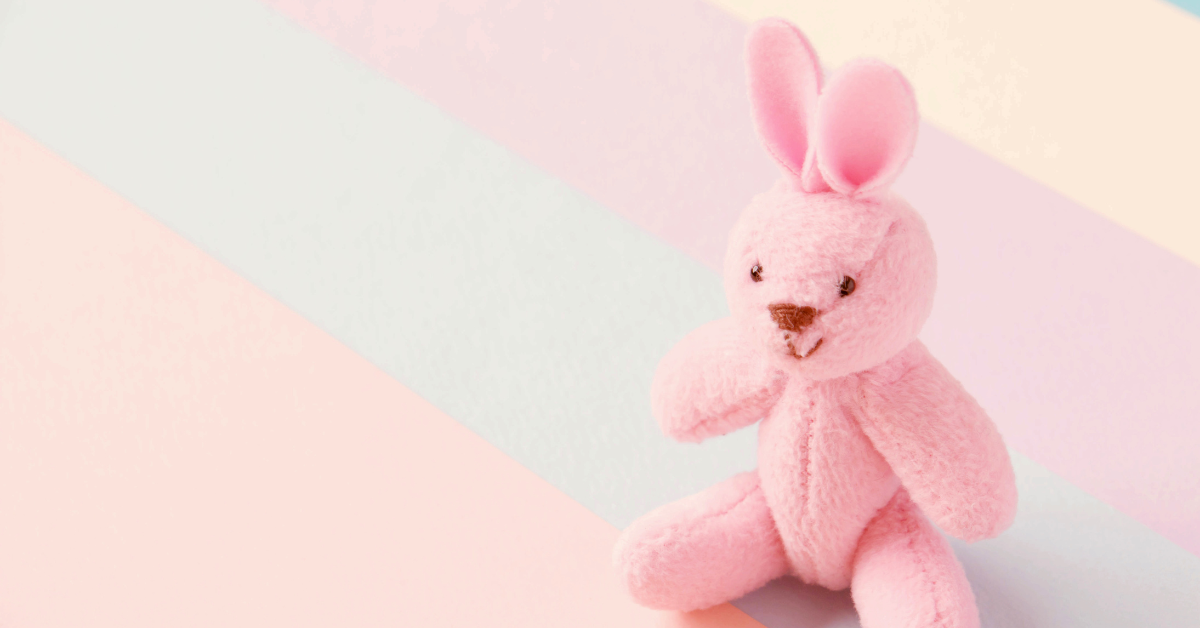Opanchu Usagi is more than a cute character. In Japan, its popularity reflects not only visual appeal but also deeper emotional resonance. The mix of vulnerability, humor, and sadness creates a uniquely Japanese sense of empathy, drawing countless fans who see their own struggles in this little pink rabbit.
What Is Opanchu Usagi? A Breakdown of Its Features and Background
Opanchu Usagi is far more than a typical cute mascot. With its round pink body, a single strand of hair sticking out from its head, and its signature pink underpants, the character stands out with a unique and instantly recognizable design. Despite its simplicity, it conveys a deep emotional nuance.
The name “Opanchu” mimics baby talk for “underpants,” creating an endearing, innocent tone that aligns perfectly with the Japanese aesthetic of cuteness. The rabbit is often shown with teary eyes or a worried expression, suggesting traits like clumsiness, failure, and being constantly picked on. These traits resonate with many young people in Japan who relate to feeling unrecognized or overwhelmed in modern society.
| Feature | Description |
|---|---|
| Appearance | Pink body, a rabbit wearing underpants |
| Expressions | Tearful, anxious, emotionally vulnerable |
| Name | Mimics baby talk, enhancing cuteness |
| Personality | Unlucky, clumsy, tries hard but fails repeatedly |
Popularity on Social Media and Why It Spread
Opanchu Usagi became widely known thanks to platforms like Instagram, X (formerly Twitter), and TikTok. What captured the hearts of many, particularly the younger generation, was the way the character mixes “cuteness” with “melancholy” in a very relatable way. The sense of loneliness and anxiety many experience in daily life is mirrored in this character, prompting users to share images or videos that reflect their emotions.
Social media posts are often paired with messages like “You did your best,” “I get it,” or “Today was tough,” paired with the character’s expressions. This has allowed the character to become a kind of emotional outlet.
| Platform | Main User Group | Common Reactions |
|---|---|---|
| Women in teens to 30s | Healing, cute, emotional | |
| X (Twitter) | Men and women 10s–40s | Memes, sarcasm, shared emotional experience |
| TikTok | Middle and high schoolers | Remix culture, audio memes, visual appeal |
Its spread via user-generated content has had a marketing impact stronger than many corporate efforts.
Mixed Reactions to Opanchu Usagi
Not everyone sees Opanchu Usagi in a positive light. While many feel saved or understood by the character, others report feeling emotionally drained or burdened by its consistently sad and unsuccessful portrayal.
| Type of Feedback | Common Themes |
|---|---|
| Positive | “So relatable,” “It’s healing,” “So cute” |
| Negative | “Too depressing,” “Can’t watch it,” “Too gloomy” |
| Neutral/Critical | “Overexposed,” “Feels forced,” “Not appealing” |
The emotional depth that makes the character compelling also makes it polarizing. It taps into real, raw human feelings, and that can be intense for some audiences.
Commercial Expansion and Marketing Success
Beyond social media, Opanchu Usagi has achieved major success in product development and collaborations. From stationery and plush toys to clothing and lifestyle goods, the character has found commercial appeal across various consumer markets.
| Product Category | Main Buyers | Reason for Purchase |
|---|---|---|
| Stationery | Students, young workers | Cute design, practical for everyday use |
| Plush Toys | Wide age range | Collectible, comforting, cute decor |
| Apparel | Trendy youth | Unique fashion, shareable on social media |
| Pop-up Goods | Core fan base | Limited edition items, event exclusives |
Elements like “limited-time only” or “exclusive location” campaigns boost consumer motivation, encouraging repeat visits and purchases.
Here are some examples of brand collaborations:
| Industry Partner | Collaboration Example |
|---|---|
| Food and Beverage | Themed cafes featuring the character |
| Public Transport | Decorated trains operated in collaboration |
| Mobile Apps/Games | Limited-edition items and downloadable stickers |
| Shopping Complexes | Stamp rallies and in-mall photo spots |
Cultural Significance and What Opanchu Usagi Represents
The way Opanchu Usagi is interpreted in Japan is deeply tied to national values and sensibilities. In Japanese culture, “pity” and “cuteness” are often intertwined. Vulnerability is not always seen as negative—there is cultural beauty in being fragile, sad, and imperfect.
| Japanese Sensibility | Description |
|---|---|
| Wabi-sabi | Beauty in imperfection, sadness, and simplicity |
| Empathy Culture | Natural tendency to relate emotionally to others |
| Hard Work Valued | Effort is often praised more than results |
Meanwhile, Western cultures often value success, strength, and positivity, which may make Opanchu Usagi harder to appreciate abroad. Cultural context plays a vital role in interpreting the character’s popularity and reception.
Conclusion
Opanchu Usagi is not just a passing trend or internet meme. It is a reflection of the emotional and cultural climate of modern Japan. Its design may seem simple, but the emotional complexity behind the character gives it profound resonance. Whether you find it adorable, moving, or puzzling, the character holds a mirror to how people feel in today’s world.
To fully appreciate it, one must look beyond the surface-level cuteness and understand the emotional narrative and cultural nuances it represents. Opanchu Usagi serves not only as a mascot but also as a quiet voice for those who feel left behind or unseen.






